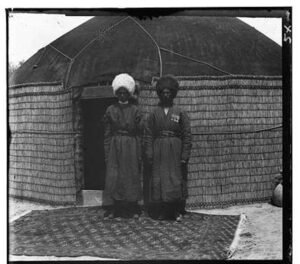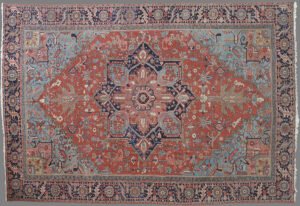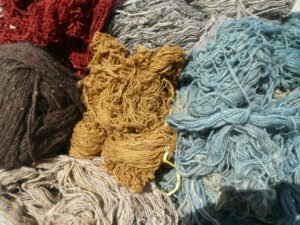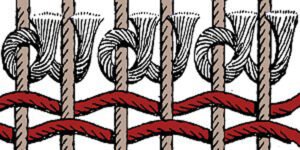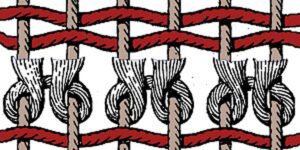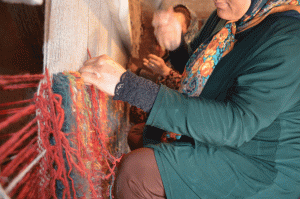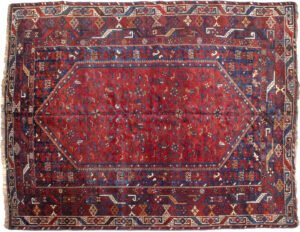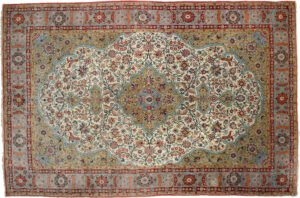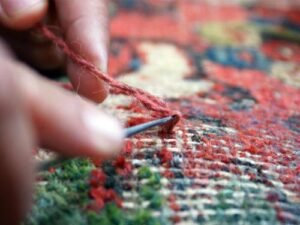Definitive 2025 Guide to Handmade & Antique Rugs
- By Mehdi Sharafi
- Published:
- Last updated: October 17, 2025
History, Authentication, Care, and Market Trends
Whether you’re a seasoned collector, an interior design enthusiast, or simply someone who appreciates the artistry woven into every strand, understanding the world of handmade and antique rugs can elevate your appreciation (and your home). This comprehensive guide covers the history, weaving techniques, regional styles, identification tips, care instructions, and investment considerations needed to make informed decisions and share knowledge with others.
1. Introduction
Handmade and antique rugs are far more than floor coverings—they’re living works of art. Each rug tells a story of the region where it was woven, the cultural traditions that shaped its motifs, and the individual artisan’s skill. While machine-made rugs can replicate patterns, only handmade and truly antique pieces capture the authenticity, nuanced imperfections, and enduring value that collectors and lovers seek. In this guide, we’ll explore:
-
Why Handmade & Antique Rugs Matter
-
A Brief History of Rug Weaving
-
Key Regions & Styles
-
Materials & Weaving Techniques
-
Identifying Genuine Antique Rugs
-
Caring for Handmade & Antique Rugs
-
Buying Tips & Considerations
-
Investment Potential & Value Trends
-
Frequently Asked Questions (FAQs)
By the end, you’ll have a holistic understanding—and a reference-worthy resource—on everything from spotting a 19th-century Persian treasure to ensuring your new Kilim investment lasts for generations.
2. Why Handmade & Antique Rugs Matter
-
Artisanal Craftsmanship:
-
Each rug is woven knot by knot, often taking months (or even years) to complete.
-
Subtle irregularities—slight variations in knot density, asymmetrical motifs—are hallmarks of human artistry.
-
-
Cultural Heritage:
-
Rugs often incorporate regional symbols, tribal emblems, and color palettes derived from local natural dyes.
-
Antique rugs serve as tangible records of a time and place, reflecting historical trade routes (e.g., Silk Road influences) and social customs.
-
-
Sustainability & Longevity:
-
High-quality wool, cotton, or silk naturally withstands wear; truly antique rugs (100+ years old) can still be functional.
-
Eco-friendly: Handmade rugs avoid the petrochemical fibers used in many modern, machine-made carpets.
-
-
Aesthetic Value & Investment:
-
Rare antique pieces appreciate over time—museums, collectors, and high-end interiors covet them.
-
A well-maintained rug can become a family heirloom, preserving both monetary and sentimental value.
-
3. A Brief History of Rug Weaving
3.1. Early Origins (Pre-1st Millennium CE)
-
Nomadic Beginnings: Rug weaving likely originated with nomadic tribes in Central Asia (e.g., Turkmen, Kazakh, Kyrgyz) who needed portable floor coverings.
-
Wool Foundations: Early weavers used hand-spun sheep’s wool (often naturally colored), employing simple geometric patterns to denote tribal identity.
3.2. Silk Road Influence (1st–13th Centuries)
-
-
As trade routes expanded, dyes (indigo, cochineal, madder root) and weaving techniques spread westward.
-
Centers like Kashan, Tabriz, and Kerman (present-day Iran) became renowned for fine silk and wool rugs.
-
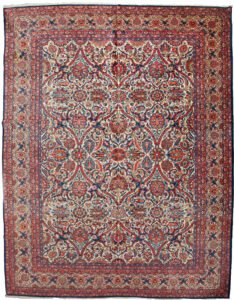
3.3. Golden Age of Persian Rugs (16th–19th Centuries)
-
Under the Safavid dynasty (1501–1736), weaving flourished: imperial workshops in Isfahan, Heriz, and Nain produced masterpieces featuring intricate medallions, floral sprays, and garden motifs.
-
Ottoman Empire (Turkey) and Mughal India also developed distinctive court styles:
3.4. 19th–Early 20th Century: European Demand & Industrialization
-
European merchants and collectors (notably those in Vienna, London, and Amsterdam) fueled demand for “Oriental rugs,” establishing auctions and galleries.
-
Some weaving centers began using chemical dyes after the mid-19th century—antique rugs can be categorized as:
-
Pre-1850 (Handspun, Natural Dye) – Finest Collectible Quality
-
1850–1900 (Transition Period, Some Natural Dye with Emerging Aniline Dyes)
-
Post-1900 (Aniline Dyes, Often Lower Quality, but Still Popular)
-
4. Key Regions & Styles
Below are some of the most celebrated rug-producing regions and their signature characteristics. Though there are hundreds of regional variations and subgroups, these represent broad categories frequently encountered by collectors and designers.
| Region / Tribe | Notable Styles | Knotting Technique & Materials | Typical Motifs & Color Palettes |
|---|---|---|---|
| Persia (Iran) | – Tabriz: Fine, high knot density; silk & wool mix | Symmetric (Turkish) or Asymmetric (Persian) knots; high-quality wool or silk | Central medallion, vine scrolls, arabesques; deep reds, navy blues, ivory |
| – Heriz / Serapi: Durable, bold geometric medallions | Symmetric knots; chunky wool pile | Angular medallions, stylized flowers; rust reds, indigo, cream | |
| – Kerman: Intricate, floral designs | Asymmetric knots; high-quality wool | Field covered in small rosettes, palmettes; soft pinks, salmon, light blue | |
| – Isfahan: Silk highlights, minute detailing | Asymmetric Persian knots; silk foundation or accents | Persian garden layout, arabesques, scrolling vines; blue, burgundy, ivory | |
| Anatolia (Turkey) | – Oushak (Uşak): Large-scale floral patterns, low knot count | Symmetric (Turkish) knots; coarser wool | Large palmettes, cloud bands, geometric flowers; pastel blues, soft golds |
| – Hereke: Court carpets, silk & silk blend | Very high knot count; Turkish knots | Classical Ottoman motifs, central medallion, intricate borders; rich reds, blues, greens | |
| – Kars: Transitional designs influenced by Caucasus | Symmetric knots; durable wool | Geometric medallions, smaller scale than Heriz; red, gold, black contrasts | |
| Caucasus | – Karabagh / Karabagh Rugs: Vibrant, pictorial | Symmetric knots; hand-spun wool | Stylized lions, eagles, vases, medallions; bright reds, azure blues, ochres |
| – Kazakh: Bold, primitive geometric pieces | Symmetric knots; coarse wool | Large octagonal medallions, hooked diamond motifs; crimson, cobalt, ivory, gold | |
| – Shirvan: Fine, dense woolen pile | Symmetric knots; fine wool | Small repeat “gul” motifs, serrated medallions; rose, dark indigo, beige | |
| Central Asia | – Turkmen (Bukhara): Tekke, Yomut gul designs | Symmetric knots; rich, handspun wool | Repeating gul (elephant foot) motifs; deep reds, brown, black accents |
| – Afghan Kilim: Flatweave, tribal patterns | Flatweave (no knots); wool weft & warp | Majestic octagon prints, tribal symbols; reds, rusts, browns, ivory | |
| South Asia | – Agra / Jaipur (India): Mughal-inspired florals | Asymmetric knots; wool or silk foundations | Persian-inspired arabesques, palmettes; ivory background, soft blue, rose |
| – Baluchi: Small tribal mats, prayer rugs | Symmetric knots; coarse wool | Geometric gul, prayer niche; deep burgundy, blue, brown | |
| North Africa | – Moroccan Beni Ourain: Plush, minimalist, shag style | Symmetric knots; thick wool pile | Large lissajous lozenges, abstract lines; creamy whites, black contrasts |
| – Tamesna / Azilal: Flatweave, vibrant tribal motifs | Flatweave; wool with Berber knot friction | Abstract geometrics, symbolic motifs; natural undyed whites, bright reds, oranges |
Tip: Authentic antique rugs seldom exhibit perfectly uniform weaves; slight variations in knot density and color saturation (known as “abrash”) are prized, indicating genuine hand-dyeing and hand-weaving.
5. Materials & Weaving Techniques
5.1. Fiber Types
-
Wool
-
Cotton
-
Frequently used for foundation (warp and weft) in Persian and Indian rugs.
-
Rarely used for pile in hand-knotted antique pieces (except Baluchi prayer mats).
-
-
Silk
-
Reserved for high-end, court-level rugs (e.g., Isfahan, Hereke, fine Kerman).
-
Produces a lustrous sheen, high knot densities (e.g., 300–1,000 KPSI—knots per square inch).
-
More fragile; display as wall hangings or low-traffic areas.
-
-
Natural Fibers (Camel Hair, Pashmina)
-
Less common but found in certain Tibetan or Himalayan tribal rugs.
-
5.2. Natural vs. Synthetic Dyes
-
Natural Dyes (Pre-1850–Early 20th Century):
-
Madder Root: Yields deep reds, rusts, corals.
-
Indigo: Produces blues ranging from soft to deep navy.
-
Pomegranate, Walnut, Saffron, Cochineal: Provide browns, yellows, oranges, purples.
-
Characteristics: Subtle variation (“abrash”) across wefts; fade gracefully under sunlight; often emit a faint vegetal or onion-skin scent when wet.
-
-
Synthetic (Aniline) Dyes (Post-1850):
-
Brighter, more uniform colors (electric reds, purples).
-
May bleed or run when washed.
-
Less desirable among serious collectors (though mid-20th-century Anatolian rugs can still be collectible).
-
5.3. Knotting Techniques
-
Persian (Senneh) Knot (Asymmetric):
-
Turkish (Ghiordes or Symmetric) Knot:
-
Flatweave (No Knot):
5.4. Weaving Process Overview
-
Foundation Setup:
-
Warp Threads: Vertical foundation, usually cotton or wool.
-
Weft Threads: Horizontal threads interwoven with warp.
-
-
Knotting & Piling:
-
Trimming & Finishing:
-
After a few inches, the pile is sheared to ensure uniform height.
-
Once completed, the weaver trims finer details (e.g., petals, leaves).
-
-
Washing & Stretching:
-
Antique or new rugs are hand-washed (often with mild soap or nettle ash).
-
Dried under the sun and stretched to ensure square shape before sale.
-
6. Identifying Genuine Antique Rugs
6.1. Age Classification & Hallmarks
-
Pre-1850 ( Genuine Antique):
-
1850–1920 (Early Aniline Introduction):
-
1920–1960 (Vintage):
6.2. Key Indicators of Authenticity
-
Knot & Weave Inspection:
-
Flip the rug; look for slight irregularities in knot placement and color (“abrash”).
-
Count knot density: antique Persian rugs often range 150–400 KPSI; a low-density rug (e.g., 50–100 KPSI) suggests tribal or lower grade.
-
-
Dye Testing:
-
Dampen a corner with distilled water; rub gently with a white cotton cloth.
-
If dye transfers, it’s likely a modern synthetic—avoid if seeking true antique quality.
-
-
Natural dyes may temporarily rub off tiny pigment residue but will soon dry without bleeding.
-
-
Fiber & Pile Examination:
-
Smell the wool: hand-spun often retains a faint sheep lanolin scent.
-
Examine the pile: coarse, hand-spun wool (19th-century tribal rugs) will show slubs (thicker fiber segments).
-
Silk highlights (e.g., in an Isfahan piece) sparkle under direct light; if it looks “plastic,” it may be a modern viscose blend.
-
-
Design & Motif Authenticity:
-
Research regional motifs: e.g., Ziegler-style Heriz rugs (late 19th century) often have exaggerated, offset medallions with softer, muted pastel palettes—versus later machine reproductions with overly crisp lines.
-
Tribal rugs: Symmetrical, repeating guls (e.g., Turkmen Tekke) should match documented gallery examples from reputable auction catalogs. Some also feature bold, often geometric patterns and rich, vibrant colors, drawing inspiration from the cultural traditions of various tribal groups like Gabbehs. These rugs frequently feature repeating motifs, symbolic imagery, and a blend of straight lines and abstract shapes, creating a unique and distinctive look.
-
-
Condition & Restoration Signs:
-
Look for consistent wear patterns: high-traffic areas (center, main walkways) will show even pile thinning.
-
Signs of professional restoration (invisible reweaving, color-matched patches) can preserve value; haphazard repairs (backing over holes with synthetic cloth) may decrease desirability.
-
7. Caring for Handmade & Antique Rugs
7.1. Routine Maintenance
-
Vacuuming:
-
Use a suction-only setting (no rotating brush) to prevent fiber damage.
-
Vacuum both sides every 6–12 months to remove embedded dust.
-
-
Rotation:
-
Rotate 180° every 6 months to ensure even wear, especially under furniture.
-
Prevent prolonged sunlight exposure on a single side to avoid uneven fading.
-
-
Padding:
-
Invest in quality rug pads (100% natural rubber or felt) to:
-
Reduce slippage and bunching.
-
Absorb impact, extending pile life.
-
Insulate against cold, improving comfort.
-
-
-
Immediate Spill Response:
-
Blot (don’t rub) spills with a clean, white absorbent cloth.
-
Mix mild detergent (pH-neutral, wool-safe) with cold water for spot-cleaning.
-
Test in an inconspicuous corner before treating the entire stain.
-
7.2. Deep Cleaning & Professional Care
-
Hand Washing:
-
Professional Restoration:
-
Consider for antique rugs with holes, severe fraying, or moth damage.
-
Seek a restorer who specializes in period-accurate techniques: matching knot type, fiber, and dye.
-
Restoration cost typically runs £100–£250 per square foot, depending on intricacy and rarity. For restoring missing ends and edges or replacing foundation it can be much higher.
-
-
Moth Prevention:
-
Vacuum regularly, especially under furniture, to remove eggs and larvae.
-
Use cedar blocks or sachets of natural lavender; avoid harsh chemical mothballs that emit strong odors.
-
Inspect storage areas (attics, basements) for humidity—maintain 40–50% relative humidity.
-
8. Buying Tips & Considerations
8.1. Establish Your Purpose & Budget
-
Decorative vs. Investment:
-
If aesthetics and matching interior design are primary, focus on newer handmade pieces (last 30 years, vintage) with vibrant colors and minimal wear.
-
For investment/collecting, target pre-1900 Persian or early 20th-century rugs with a documented provenance.
-
-
Room & Traffic Assessment:
-
High-traffic areas (entryway, living room) benefit from durable tribal rugs (Heriz, Kilim, Beni Ourain, Bijar).
-
Low-traffic spaces (bedrooms, formal dining) can showcase antique or low piled pieces .
-
8.2. Where to Buy
-
Reputable Dealers & Galleries:
-
Look for established galleries with transparent return policies (e.g., 14-day inspection).
-
Auction houses (Sotheby’s, Christie’s, Stack’s Bowers) for authenticated antique rugs with provenance.
-
-
Online Marketplaces (with Caution):
-
Platforms like 1stdibs or Incollect often vet dealers; verify seller ratings, request detailed photos (including back, fringe, selvedge).
-
Watch for “too good to be true” deals—if a 19th-century Tabriz is priced at 10% of market, it’s likely a reproduction or has major problems.
-
-
Estate Sales & Antique Shows:
-
Good sources for lower-priced, genuine antique rugs (though provenance may be unclear).
-
Bring a loupe to examine knot uniformity, check for dye stability, and inspect for repairs.
-
8.3. Questions to Ask the Seller
-
Age & Provenance:
-
Request any receipts, previous restoration records, or expert appraisals (e.g., certificate from an ACRA-accredited appraiser).
-
Ask if the rug was sourced from a notable collection, estate, or museum deaccession.
-
-
Material & Dye Verification:
-
Confirm fiber type (wool, cotton, silk) and if dyes are natural or synthetic.
-
If possible, seek a small, inconspicuous corner for a water-rub test (for colorfastness).
-
-
Condition & Restoration History:
-
Clarify the extent of repairs: re-weaving, new fringe insertion, color touch-ups—ideally, get these documented in writing.
-
Inquire about moth-proofing treatments or any chemicals used (some chemicals can damage fibers over time).
-
-
Return & Authentication Policies:
-
Reputable dealers will offer a 7–14 day “satisfaction period” during which you can return if the rug doesn’t meet expectations.
-
They may provide a certificate of authenticity (COA) from a recognized rug expert or laboratory analysis of dyes.
-
9. Investment Potential & Value Trends
9.1. Why Antique Rugs Appreciate
-
Scarcity & Rarity:
-
Fewer pre-1900 rugs remain in good condition; demand outpaces supply.
-
Certain tribal weavings (e.g., early Kazakh or Baluch prayer rugs) have small production runs.
-
-
Provenance & Exhibition History:
-
Rugs documented in museum collections or shown in exhibitions command premiums—some buyers seek rugs with “published provenance.”
-
-
Condition & Restoration Quality:
-
Minimally restored rugs with intact original pile (especially silk or high-quality wool) fetch top prices.
-
Over-restoration can detract if changes obscure original design or use synthetic dyes.
-
9.2. Market Indicators & Pricing Benchmarks (2025 Snapshot)
-
19th-Century Persian Heriz (9×12 ft):
-
Auction Range (Good Condition): £12,000 – £25,000
-
Factors: Rich rust and deep blue contrast, minimal repairs, provenance from a European estate.
-
-
Early 20th-Century Turkish Oushak (8×10 ft):
-
Retail Price (Estate Dealer): £4,500 – £12,000
-
Handspun wool, characteristic large-scale floral cartouches on pastel ground.
-
-
Antique Caucasian Kazakh (4×6 ft):
-
Auction / Gallery: £6,000 – £10,000
-
Crimson field with jagged-edged medallion; best examples retain crisp tribal geometry.
-
-
19th-Century Indian Agra Silk Rug (6×9 ft):
-
Dealer Pricing: £15,000 – £30,000
-
Fine silk, tight knotting (>500 KPSI), Mughal floral bouquets, provenance linked to Indian royal collections.
-
Note: Pricing fluctuates based on geopolitical stability in weaving regions, currency exchange rates, and shifting collector tastes. Always consult recent auction results (e.g., Sotheby’s Asian Art Week, Christie’s Oriental Rug & Carpet sale) for the most current benchmarks.
10. Frequently Asked Questions (FAQs)
10.1. How can I tell if a rug is handmade versus machine-made?
-
Back Inspection: Handmade rugs display individual knot backs with slight irregularities; machine-made rugs show uniform, grid-like stitching.
-
Fringe Attachment: On hand-knotted rugs, the fringe is the warp’s literal extension; on machine-made, fringe is usually sewn on separately.
-
Price & Provenance: Extremely low prices (e.g., £100 for a 6×9 wool rug claiming to be Persian) often indicate synthetic, machine-made origin.
10.2. What is the difference between “vintage” and “antique” in rug terminology?
-
Antique: Generally accepted as 100+ years old (pre-1925).
-
Vintage: 50–99 years old (1925–1975).
-
Transitional or “Collectible Vintage”: 30–50 years old—often used for mid-century modern studio weavings.
10.3. How should I store an antique rug not currently in use?
-
Clean Thoroughly: Remove all dust, debris, and potential insect larvae.
-
Roll, Don’t Fold: Roll onto a 4–6-inch acid-free cardboard tube (avoid creases).
-
Use Breathable Wrap: Cover with cotton sheets or unbleached muslin—never plastic, which traps moisture.
-
Climate Control: Store at 50–60°F (10–15°C) with 40–50% humidity.
-
Elevated Storage: Keep at least 4–6 inches off the ground to prevent rodent or insect damage.
10.4. Can I place an antique rug in a high-traffic area?
-
Caution: High-traffic areas (entryways, kitchens) accelerate wear—unless the rug is relatively durable (e.g., Heriz, Kars).
-
Layering Option: Place a high-quality, natural-rubber, non-slip pad beneath and rotate the rug every 3–6 months.
-
Protective Measures: Use a decorative runner on top of the antique (in hallways), or implement occasional professional cleaning to maintain pile integrity.
10.5. Are there eco-friendly ways to clean antique rugs at home?
-
Gentle Shaking & Beating: Take the rug outside, drape over a clean railing, and gently beat with a rug beater to remove embedded dust.
-
DIY Nettle Ash Cleaner: Boil nettle leaves, strain, and use the cooled liquid with a soft brush—this traditional method lifts dirt without harming natural dyes.
-
Spot Treatment: Blot spills immediately; for greasy stains, sprinkle baking soda or cornstarch to absorb oils before vacuuming.
-
Avoid Harsh Chemicals: No bleach, commercial stain removers, or high-pH detergents—these can strip natural dyes and weaken wool fibers.
11. Conclusion
Handmade and antique rugs carry centuries of tradition, weaving techniques, and cultural significance in every knot. As you venture into collecting, decorating, or simply appreciating these textiles, remember:
-
Knowledge is Power: Learn to identify genuine materials, dyes, and weaves. An informed buyer is less likely to be misled by replicas or low-quality reproductions.
-
Quality Over Quantity: Seek authentic craftsmanship (higher knot densities, natural dyes, hand-spun wool) rather than the lowest price.
-
Maintenance Extends Life: Regular vacuuming, rotation, and professional cleaning keep your rug vibrant and structurally sound.
-
Provenance Matters: Documentation—receipts, restoration records, COAs—reinforces value and trustworthiness.
-
Rugs as Investment & Artifacts: Beyond décor, antique rugs appreciate over time, preserve cultural heritage, and tell stories of the artisans who poured countless hours into their creation.
Whether you’re furnishing a heritage home, adding a touch of warmth to a modern loft, or building a serious collection, your journey begins with understanding. Bookmark or link to this guide, share it with fellow enthusiasts, and let it serve as your go-to reference for all things handmade and antique in the captivating world of rugs.
Enjoyed this guide? Feel free to reference, share, and link to it whenever you or your readers seek authoritative insights into handmade and antique rugs. For tailored advice or appraisal inquiries, visit Sharafiandco.com or contact our team of certified rug experts.

